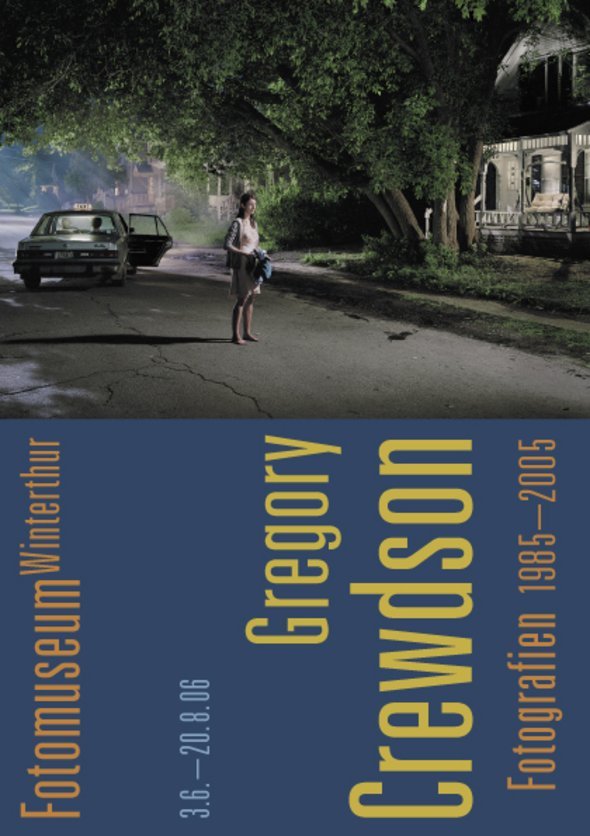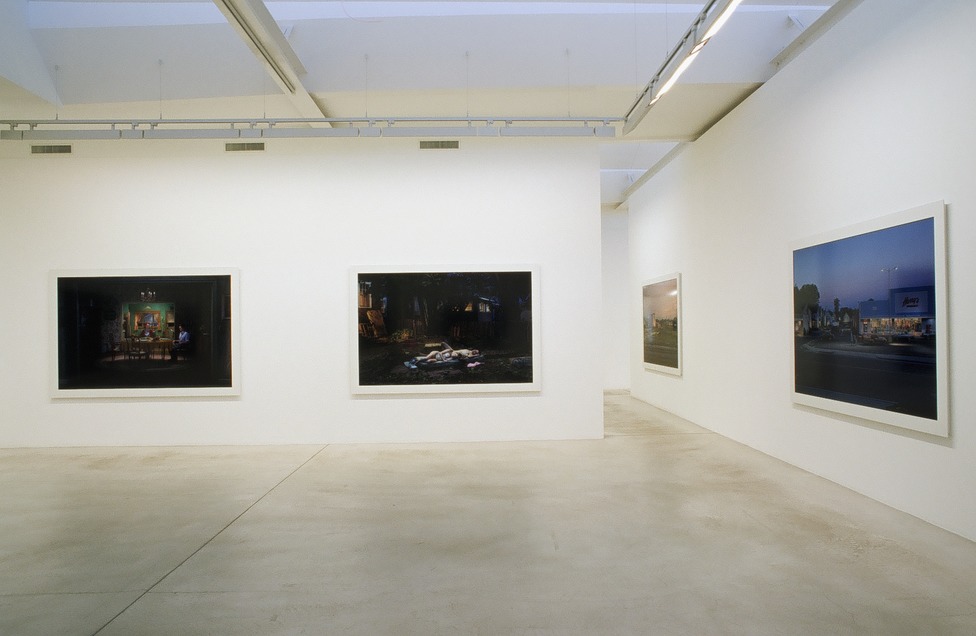Against the background of suburban America, and with direct reference to the myths of Hollywood movies, Crewdson has dealt with the neuroses, fears and secret desires of a society looking into the abyss of its own psyche since the mid-1980s. Since the series Twilight, his intricate and perfectly staged photographs were shot with the help of a large crew after weeks of extensive preparation on film-like studio sets or on location.
Himself an influential teacher at Yale University, Crewdson’s precise and realistic descriptions of rural America were influenced by the documentary style established by American photographers such as Walker Evans and William Eggleston. But with his use of theatrical lighting, employment of fantastic and enchanted elements and belief in a broad narrative style, he further developed the tradition of staged photography, which – since Cindy Sherman and Jeff Wall at the very latest – has become one of the most important means of expression in contemporary photography.
For once, the beginning of his career is documented in the gallery with Early Works that Crewdson made as a graduate student between 1986 and 1988. These first, small-format colour photographs portray the domestic environment as an ambience of loneliness and undefined expectations. His pictures of white planked houses, carefully tended gardens and swimming pools, and the fixed gaze at the television screen speak of a lack of communication, of alienation and isolation in ostensibly secure and familiar homes in neighbourly surroundings.
The second group of works entitled Natural Wonder from 1992 to 1997 reflects Crewdson’s fascination with nature as a magical, mythical zone full of mystifying events. He delights in contradictions, the tension between domesticity and nature, between civilisation and animality. Tulips grow to overpowering size, birds perch almost ceremoniously around a circle of sand and eggs, nature intimates that she has her own laws unknown to us.
Hover, taken between 1996 and 1997, is Crewdson's only black-and-white series. It shows rural, suburban America from a bird's eye perspective: picket fences separating each house from the next, the break-in of a bear into the idyll of the "Tract Houses", the laying of sections of lawn to form a carpet in "Main Street", or circular mowing as a form of exaggerated house and garden care. Idylls and break-ins, calmness and turmoil are presented in a fragile balance.
The fourth part (shown here at the beginning of the exhibition) is devoted to the programmatic series Twilight (1998-2002) with which Crewdson achieved international recognition. Here, the puzzling and dark energies of an untameable nature arrive in the living room: a tired, perspiring woman smeared with soil is seen sitting in her living room, which is entirely taken up by the flowerbed that she obviously just laid out herself. A boy reaches into the drain of a shower, groping into the underground with his arm looking like an extremity separated from the rest of his body: Crewdson's staging of the act of establishing contact with the unconscious and the repressed.
In Hover and Twilight, as well as in the later groups Dream House (with several well-known film actors including Julianne Moore, Gwyneth Paltrow and William H. Macy) and Beneath the Roses, the artist worked more like a film director than a photographer. Every motif required a large crew and extravagant production conditions similar to those on a film set. Artistically and technically, Crewdson has reached new heights in his most recent series, Beneath the Roses: entire streets were blocked off and empty houses were burned down (naturally with the permission of the local authorities), crossroads were transformed into film sets with water, light, fire and actors. Up to 150 persons were involved in the production, including specialists for aerial photography and special effects, casting agents, crane operators, hair stylists and make-up artists. Even computer graphics specialists took part.
Crewdson deliberately utilised extensive digital composing technologies for the first time in Beneath the Roses to give it its typical hyper-realistic clarity, incredible depth and focused details. The pictures make an almost surrealistic impression through their omnipresent clarity. They hypnotise us as we view them. We flit to and fro among Crewdson's metaphors for mental states, for anxiety and panic and longing, come face to face with a rich palette of symbols – open bags, bleeding wounds, wild, excited eyes and hair, tense family members –, which, in David Lynch-like sets, combine to formulate the thin layer between the normal and the abnormal, everyday life and catastrophe, to which Gregory Crewdson refers in his work.


